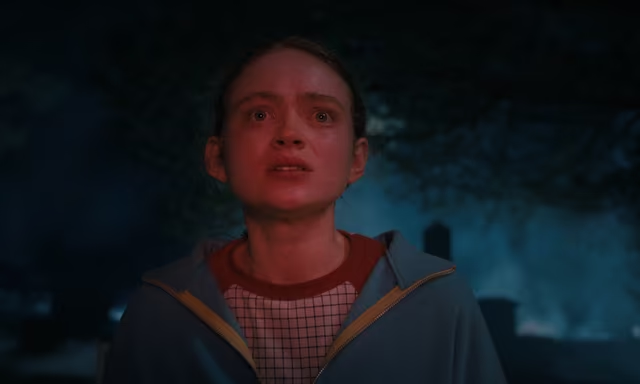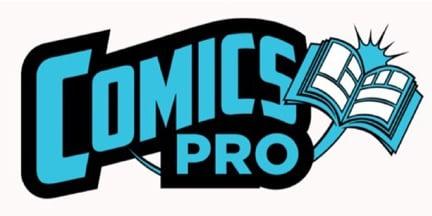If you click on a link and make a purchase we may receive a small commission. Read our editorial policy.
How anime’s punk era in the US 1980s set the stage for today’s global fandom
Before anime went mainstream, it survived as underground punk — and one producer saw its future first.

Popverse's top stories
- DC to reveal the secret history of the Absolute Universe, and how it changes Superman's place in it all
- Watch now: Warner Bros.'s official Mortal Kombat II panel from NYCC 2025
- Sadie Sink's Max Mayfield Is the True Hero of Stranger Things — and could be the heart of the show’s series finale
It isn’t a big secret that anime has come a long way since it first started to carve a place for itself in pop culture. For years, anime existed in the fringes of western fandom, thriving in the underground of comic-cons and in video stores. Back in 1987, just a year before the iconic Akira hit cinemas and the year after Dragon Ball began airing in Japan, Western studios were still struggling to figure out what to do with anime. The 1980s were when anime was living its punk era in the US.
One person who saw the potential in anime before most people in the US was Jerry Beck. The animation historian and film producer brought the aforementioned Akira to US cinemas along with Ghibli classics like My Neighbor Totoro and Kiki’s Delivery Service before the end of the 1980s through the Streamline Pictures brand. We sat down with Beck and asked him how he was able to spot the early seeds of the anime fandom before most other production companies would touch it.
“Anime was kind of exploding everywhere except in the United States,” Beck said. So how did he spot the market? Turns out the trick was going where the fans were.

“I’m an avid Comic Con guy,” Jerry Beck told us. “So I was familiar with what was going on in Japanese animation, so there was a buzz, let’s put it that way. And, unfortunately… no one was doing anything about distributing Japanese anime in America. And if it were being distributed, it was being dumbed down.”
“Bad dubbing, editing… the few people who picked it up and did it, you know, they didn’t know what they had,” Beck continued. This is very different from today, when we get dozens of shows from streamers like Crunchyroll and Netflix every season. Back in the early days of the fandom, you had to work hard to find new releases. “I happened to be working in film distribution, because, well, it’s a whole story of how I got there, but I stepped up and, you know, basically figured it out with a partner, Carl Macek, who was behind Robotech, and, basically, we just figured out maybe we can get these films. No one else is picking them up; maybe we can put them in theatres.”
“We knew there was an audience for it, mainly because we had gone to comic cons and we knew that there were people at comic cons who wanted to see this on the big screen.” Beck had already spotted the interest in anime from his time at comic cons. The problem wasn’t that there wasn’t a demand for anime – the problem was that no one in the Western animation industry wanted to touch it.
“The reason [anime didn’t take off] was essentially, the machine, the man, the industry, the way it was,” Beck explained to us. Just like the movie industry didn’t see a market for sci-fi films before Star Wars became a huge success, studios didn’t know what to do with the mature themes of anime. “The prevailing stereotype in the United States is that animation is for children. Animation is not for adults. It is nothing to be taken seriously, and if you have that as the beginning of your mindset, you know, a film with attempted rape, extreme violence, you can’t even comprehend. The movie executives could not comprehend, ‘How can we sell this in the United States? We cannot.’ And thus, they kept it away.”

A similar type of prejudice kept anime from TV shows, with TV executives refusing to distribute anime in the US because they preferred “superior, American-made animation,” according to Beck. Anime in the 1980s and early 1990s in the US, before the arrival of shows like Sailor Moon or Pokémon, showed that there was a market for it, was difficult to come by. “It was being kept down. Japanese animation emerged from the underground. From when I distributed the movies, we knew we were too small. I luckily had a background in distributing art films to repertory theatres, to special movie theatres, not to AMC or big chains. We were never gonna get into those, so we played for a couple of days or a week at certain calendared theatres.”
Anime stayed underground for years until video stores started to notice that these movies were flying off their shelves. “With video is where it [finally] went. It became something because video stores can see people coming and demanding, asking, you know, for Akira or other anime, and that’s where it really starts.”
The world that Jerry Beck describes certainly lines up with my own experience as an anime fan in the 90s, when you’d find one or two episodes of a show on a VHS tape that was bootlegged and poorly dubbed, but you were happy to have it. Anime is mainstream now, with movies like Demon Slayer and Chainsaw Man hitting record numbers at the box office, but back in 1987, it was living out its punk days under the radar of the big studios.
Follow Popverse for upcoming event coverage and news
Find out how we conduct our review by reading our review policy
Let Popverse be your tour guide through the wilderness of pop culture
Sign in and let us help you find your new favorite thing.















Comments
Want to join the discussion? Please activate your account first.
Visit Reedpop ID if you need to resend the confirmation email.